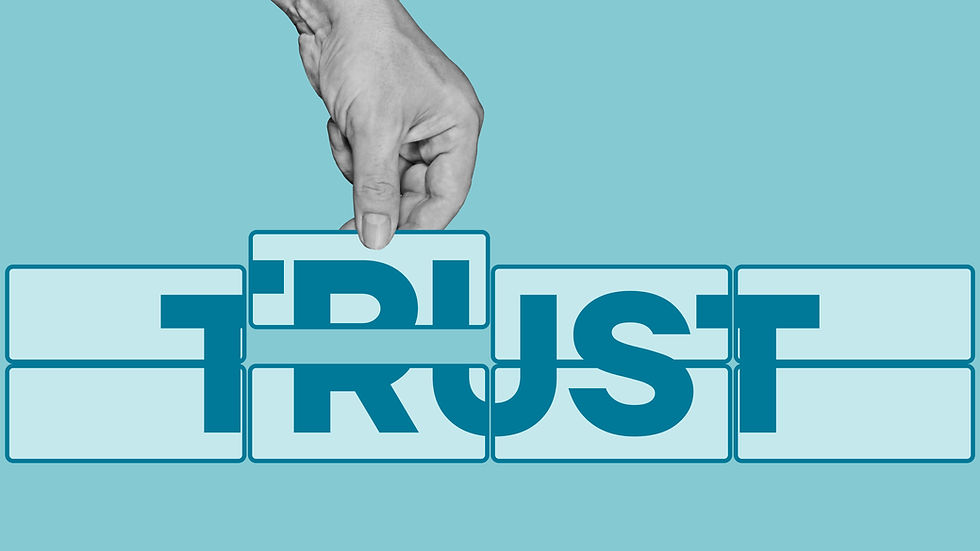Developing My Leadership Approach
- Jeff Mayfield

- Dec 6, 2024
- 7 min read
Developing My Leadership Approach: A Journey of Transformation

Introduction
Leadership is often born out of necessity, shaped by the challenges and opportunities one faces. My leadership approach, the Motivational Empowerment Leadership Model (MELM), was solidified during a time of meaningful change for the manufacturing company I was leading. Our largest customer required us to become a certified supplier as a condition of our supplier contract. Meaning if we could not become certified, we would lose the parts we supplied to a competitor. This would be devastating to our business. Our new required quality levels must adhere to stringent Six Sigma standards. This task was daunting for any organization, let alone a mostly soft-tool metal fabricator producing thousands of contract parts involving significant human intervention in our processes. However, this challenge proved to be a catalyst for positive transformation, evidenced by the following results:
Achieving Six Sigma quality, with less than 50 nonconforming parts (NCPs) per million (in 2009, only 24 NCPs)
Saving hundreds of thousands of dollars in scrapped parts and rework costs
In this article, I will explain how I implemented this leadership approach, delving into each of its key components and traits, and illustrating these with real-life examples.
Defining the Motivational Empowerment Leadership Model
The Motivational Empowerment Leadership Model focuses on empowering individuals to make decisions and take actions based on their unique expertise and knowledge. It aligns these actions with the organization's goals and mission through proper communication channels and accountability measures. Unlike traditional hierarchical models, this approach advocates for distributed leadership, enabling every individual within the organization to assume leadership roles.
Key Traits and Components
Empower Yourself and Others
Communication with Clarity
Foster Continuous Improvement
Build Trust Within Your Team
Employee Placement and Development
Promote Ownership and Accountability
Encourage Collaboration
Effective Decision-Making

Implementation of the Motivational Empowerment Leadership Model
Empowering Yourself and Others
Empowering team members to take responsibility and make decisions is fundamental to the Motivational Empowerment Leadership Model. It involves promoting collaborative, high-quality decisions by involving team members with the most experience and competence. Trust and respect permeate the organizational culture.
Real-Life Example: Google
Google’s 20%-time policy allows employees to dedicate 20% of their time to projects they are passionate about. This policy has led to the creation of successful products such as Gmail and Google News. By empowering employees to take ownership of their projects, Google fosters a culture of innovation and engagement.
Communication with Clarity
Effective communication is the cornerstone of any successful organization. Clear communication channels facilitate transparency, reduce misunderstandings, and foster a culture of openness.
Real-Life Example: Southwest Airlines
Southwest Airlines uses regular town hall meetings and transparent communication practices to ensure all employees understand and are committed to the company’s goals and values. This has been instrumental in aligning their workforce with the company’s mission of providing the highest quality of customer service.
Foster Continuous Improvement
Prioritizing continuous learning and development builds a competent workforce. Establishing a continuous improvement process throughout the organization is vital. Excellence in every task should be the goal, and providing the required resources and skills at all levels ensures the proper placement of people to achieve success.
Real-Life Example: Adobe
Adobe empowers its employees through its “Check-In” program, which replaces traditional annual performance reviews with regular, informal feedback sessions. This approach fosters continuous improvement and accountability, allowing employees to take ownership of their development and performance.
Build Trust Within Your Team
Trust and respect are the cornerstones of effective leadership. Leaders must trust and respect their team members' abilities and judgment, and vice versa. Establishing mentorship or apprenticeship programs throughout the organization helps continuously assess team members’ skills, provide experience in their roles, and support personal growth.
Real-Life Example: Zappos
Zappos’ culture of trust and respect empowers employees to make decisions that enhance customer satisfaction. This autonomy enables employees to provide exceptional customer service, leading to high levels of customer and employee satisfaction.
Employee Placement and Development
Effective employee development involves creating and implementing strategies that help employees enhance their skills, advance their careers, and contribute more effectively to the organization.
Real-Life Example: Netflix
Netflix operates with a high level of transparency and autonomy, empowering employees to make decisions that drive innovation and growth. The company’s culture of freedom and responsibility allows employees to experiment and take risks, leading to groundbreaking advancements in content creation and delivery.
Promote Ownership and Accountability
Promoting ownership and accountability encourages employees to take pride in their work and strive for excellence. Clear metrics and success objectives provide direction and help in measuring progress.
Real-Life Example: Spotify
Spotify’s leadership model emphasizes trust, autonomy, and continuous learning. The company’s agile methodology allows teams to work independently while staying aligned with the overall mission. This approach has led to rapid innovation and a highly engaged workforce.
Encourage Collaboration
A collaborative environment fosters innovation and better outcomes. This involves sharing ideas and experiences openly, focusing on the organization’s goals and objectives, and establishing incentive programs that reward employees when the organization succeeds.

Real-Life Example: Whole Foods Market
Whole Foods Market empowers its employees by involving them in decision-making processes at the store level. Teams are given the autonomy to manage their departments and make decisions that affect the overall customer experience. This approach has led to high levels of employee engagement and customer satisfaction.
Effective Decision-Making
Encouraging decisions at all levels, not just at the top, leverages the unique expertise of each team member. Incorporating constant and clear, open communication of intentions and feedback ensures that skilled teams with proper resources can maintain continuous improvement processes, minimizing mistakes.
Real-Life Example: W.L. Gore & Associates
W.L. Gore & Associates, known for its innovative products like GORE-TEX, operates with a flat organizational structure that empowers employees to take ownership of their work. The company encourages a culture of collaboration and open communication, which has led to numerous technological advancements and a highly motivated workforce.
Case Study: Six Sigma Quality Pursuit
One instance vividly stands out while reflecting on my Motivational Empowerment Leadership Approach. This occurred during our pursuit of a Six Sigma quality rating from our largest customer. We faced a significant issue with nonconforming parts (NCP) in the form of misaligned holes, which had a tolerance of just 1/1000th of an inch. These defective parts would crash our customer's robotic assembly line, resulting in substantial line-down charges. This was a serious issue, especially since we had recently invested heavily in a new drilling machine for this work cell.
Fortunately, our quality inspectors were catching the nonconforming parts before they reached the customer. However, I realized that if we were truly committed to our continuous improvement pledge as a company, we would have to solve this issue swiftly using the tools we had invested in and were trained in. It also presented an opportunity to utilize and test my leadership methodology.
Identifying the Problem
I began by delving into the production data and measurements taken by our inspectors and engineers, alongside labor data collected from the floor. It was easy to pinpoint the production shift and the specific operation where the irregularities were occurring. Our quality and engineering personnel rechecked and recertified the drilling machine without any exceptions, further narrowing down the issue.

Forming a Project Team
To tackle this problem, I established a project team that included work cell supervisors and production team members, particularly from the second shift where the issues were occurring. While I championed the team and mentored the team through the entire project. I delegated the leadership of the project to the second shift supervisors after discussing my leadership goals with the quality and engineering team members, providing the supervisors with the necessary technical support. We followed proper Six Sigma protocols, with clear goals and measurable outcomes.
Encouraging Ownership and Collaboration
I insisted that the project leaders include production operators in the problem-solving process. Quality and Engineering presented their data, confirming the capability and repeatability of the equipment. The issue clearly stemmed from human factors rather than machinery.
Creating a Trust and Respect Culture
I emphasized the importance of a business culture based on trust and respect, where solutions were the target, and not punishing mistakes if everyone was honest and respectful about the issues without repetitive mistakes. This environment encouraged operators and supervisors to take ownership of solving the problem. As discussions progressed, the operators admitted they had developed an unauthorized template for drilling holes in the years before the establishment of the drilling machine. The operators were confident they had the experience and expertise to hold the tolerances and therefore could increase production during tight deadlines. This old template was untested and uncertified by Quality and Engineering. As the project progressed, the team clearly learned the old template and their experience would not hold the tight tolerances required by our customer in a repeatable process. The team members also learned how much the scrap parts were costing the company in profits.

Implementing Solutions
What could we do better and improve? It turned out that the second-shift operators had not attended the training provided for Six Sigma certification, unlike their first and third-shift counterparts. By addressing this training gap and emphasizing the importance of certified processes, the second shift production team pledged to own their processes, attend all necessary training, and communicate openly about their progress. They understood.
The team destroyed the unauthorized templates, committed to implementing clear communication, and adherence to certified processes. We documented the project under the guidance of our in-house quality and engineering experts, using it as part of our certification projects with our customer. I continued to visit the second shift regularly, celebrating their successes and learning from their failures. They became one of our most skilled and reliable departments in the company.
Conclusion
The Motivational Empowerment Leadership Model is a transformative approach that emphasizes empowerment, communication, continuous improvement, trust, development, ownership, collaboration, accountability, and effective decision-making. By fostering a culture where every team member feels valued, empowered, and aligned with the organization’s mission, this model drives higher levels of engagement, accountability, and innovation.
Appendix: Summary of Case Studies
Google: Empowering employees with the 20%-time policy led to innovative products like Gmail and Google News.
Zappos: Empowering employees to make decisions resulted in exceptional customer service and high employee engagement.
Netflix: A culture of freedom and responsibility drove significant advancements in content creation and delivery.
Southwest Airlines: Empowering employees at all levels to improve customer experience fostered trust and respect.
Spotify: Trust, autonomy, and continuous learning led to rapid innovation and a highly engaged workforce.
Adobe: The “Check-In” program promotes continuous improvement and accountability.
Whole Foods Market: Involving employees in decision-making at the store level enhanced employee engagement and customer satisfaction.
W.L. Gore & Associates: A flat structure and culture of collaboration resulted in technological advancements and a motivated workforce.
By adopting the Motivational Empowerment Leadership Model, organizations can unlock the full potential of their teams, driving success in today’s competitive business environment. This model not only enhances individual performance but also contributes to the overall success and sustainability of the organization.
I would love to continue this discussion with you. I can be reached at jeff@jeffmayfield.org .
Blessings and Success
Jeff Mayfield



